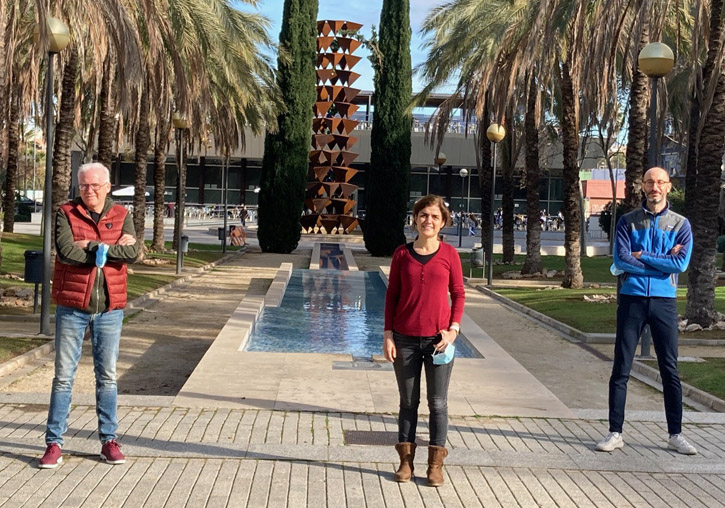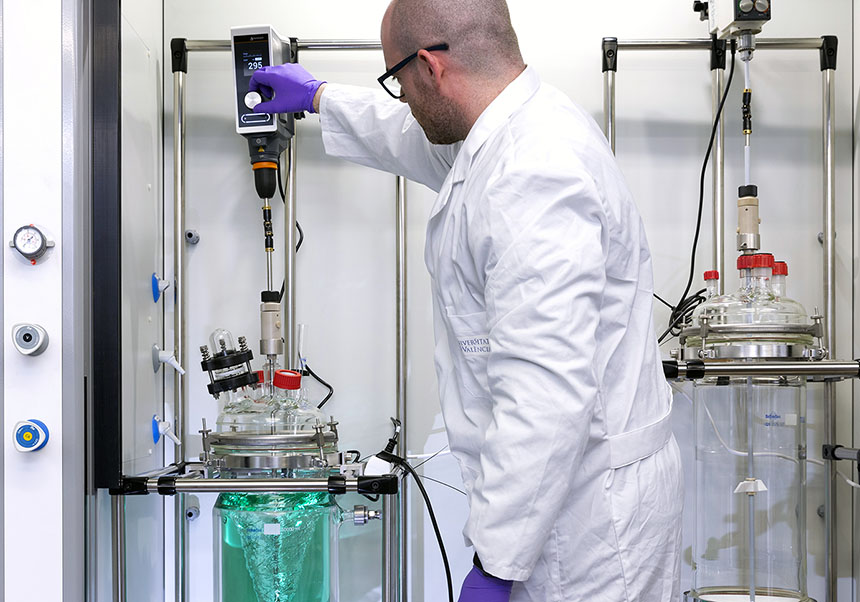Developed highly sensitive biosensor-based system for direct detection of SARS-CoV-2 in air
- Press Office
- December 28th, 2020

Researchers from Universitat Politècnica de València (UPV), in collaboration with specialists from the University of Valencia, have devised a new system, based on a highly sensitive mass biosensor, which continuously monitors signals for the direct detection of SARS-CoV-2 in atmospheric aerosols. The device, which is currently in the prototype phase, allows for the evaluation of air quality and the early detection of viruses in indoor spaces such as homes, classrooms, restaurants, cinemas or means of transport.
“This route for spread is becoming more important, so preventive control strategies must take into account airborne transmission of the virus for effective mitigation of SARS-CoV-2. The system we have developed is a mass biosensor using specific antibodies capable of detecting the SARS-CoV-2 virus airborne”, says Ángel Maquieira, professor from the Department of Chemistry and director of the Institute for Molecular Recognition and Technological Development (IDM) at the UPV.
Preliminary studies have been carried out using non-infectious virus-like particles (VLP) developed by Luis Martínez Gil, María Jesús García Murria and Ismael Mingarro, from the Department of Biochemistry and Molecular Biology (BIOTECMED Institute) of the University of Valencia.
According to the researchers at the University of Valencia, VLPs ('virus-like particles') are viral membranous particles that mimic the virus but do not contain its genome, so they are not infective. In the specific case of SARS-CoV-2, the VLPs obtained at the UV included the four structural proteins of the virus, the spicule protein (S), the envelope protein (E), the major membrane protein (M), and the nucleocapsid protein (N), containing, therefore, all the elements of the virus structure that allow its recognition by antibodies, as well as by other immune response mechanisms.
“The biosensor has been evaluated at laboratory scale; it detects airborne VLPs in a simulated virus-laden environment, providing a signal related to the viral load present in the environment. Thus, upon detection of viral load at levels that may be harmful to health, it would emit an alarm signal. It is, therefore, a biosensor capable of detecting SARS-CoV-2 at critical concentration thresholds,' explains Augusto Juste, pre-doctoral researcher from the IDM Institute at the Universitat Politècnica de València.
For Sergi Morais, also a researcher at the IDM of the UPV, it is “a very promising development given that it can serve as an alarm and control system to prevent Covid-19 infection, without the need to perform PCRs, by analysing the quality of the air in crowded or dangerous spaces. This will allow health measures to be taken to prevent and warn of Covid-19 transmission.
Assesment by the Hospital General Universitari de Castelló
The methodology and prototype developed by the IDM team is currently in the evaluation phase at a hospital level, through a study in collaboration with the Preventive Medicine and Healthcare Quality service of the Hospital General Universitari de Castelló, directed by Mario Carballido Fernández. “The results will allow formulation of management proposals to reduce the probability of transmission in indoor healthcare settings. In addition, it should help to establish new management elements related to the safety of secondary care facilities that will help to protect the health of patients and healthcare staff and thus reduce the risks of transmission in the general population. With the onset of winter and the closure of terraces, it is necessary to ensure that enclosed spaces are safe places”, says Carballido.
The IDM-UPV biosensor performs direct measurements and also stands out for its ease of use, low cost and versatility. “Currently, there is no competitive technology on the market like the one we have developed at prototype level and it could become a virusometer in the near future”, concludes Professor David Giménez-Romero of the University of Valencia.
The development of this prototype has been funded by the Department of Innovation, Universities, Science and Digital Society of the Generalitat Valenciana (government of the Valencian Community), in the framework of the call launched last March to the agents of the Innovation System of the Valencian Community to develop innovative solutions in the fight against the coronavirus.















